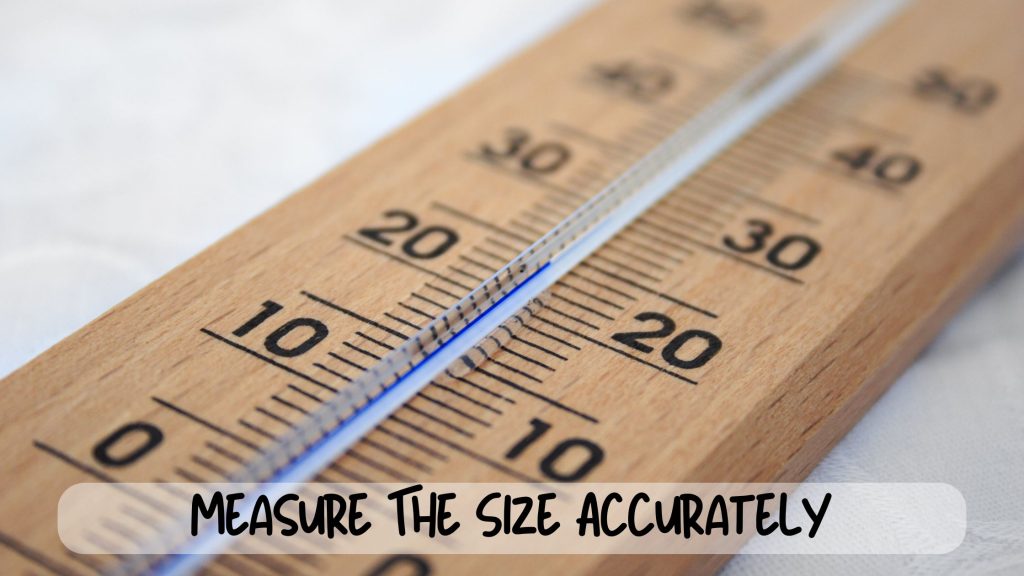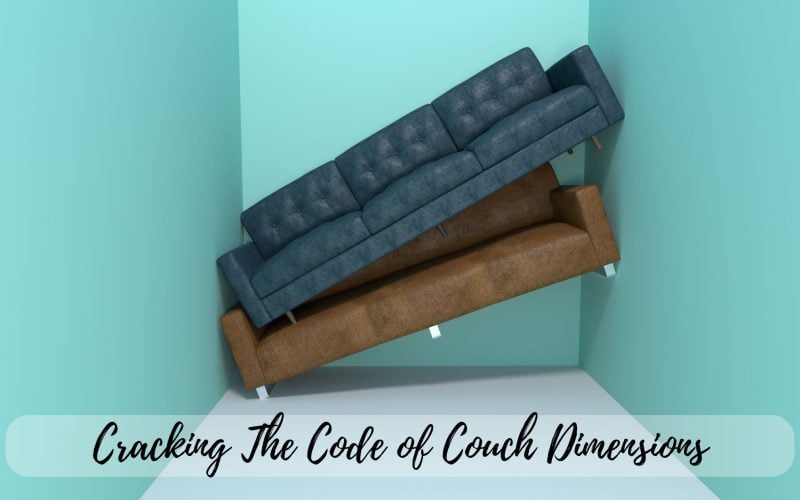Before you whip out that credit card to purchase a new couch, the smartest thing you can do is arm yourself with a measuring tape! Ensure a flawless fit by taking these crucial measurements into consideration:
- Width: Measure the widest point of your couch, spanning from one armrest to the other, to determine its width dimension.
- Seat Depth: Measure from the back of the couch to the front edge, factoring in cushion depth and additional comfort space.
- Height: Measure the back height of the couch from the floor to the top. Ensuring compatibility with existing shelves or windowsills.
Remember that each couch is unique, so always adhere to our golden rule: MEASURE TWICE! Precision is paramount in furniture measurement.
Also, read about crucial space-saving beds for those who are living in small houses or apartments. It can be very helpful.
If uncertainty clouds any step, seek professional assistance or consult a furniture store expert to avoid any potential return hassles.

With accurate measurements in hand, you’re now equipped to assess whether your new furniture piece will fit in harmoniously with your room’s current layout. Follow these steps:
- Measure, Measure, Measure: Use your measuring tape to determine the dimensions of both your new furniture piece and the room itself.
- Craft a Floor Plan: Use graph paper to craft a scaled model of your room. This visual aid will help you determine the ideal placement of your furniture.
- Consider Spatial Requirements: Factor in additional space around each furniture piece to ensure ease of movement and functionality within your room.
Explore Virtual Tools:
When possible, experiment with online room planners or AR (augmented reality) applications to digitally arrange your furniture and try out different layouts before committing to any physical alterations.
Now it’s time to make sure your chosen couch can conquer the thrilling journey to its new home. First, remember to clear space by removing your old couch before the arrival of the new one. So, most delivery teams won’t handle this task for you.
Then to determine if your couch will fit through a particular door, it’s important to consider your entire space. Including entryways and door frames:
- Width Matters: Measure the widest point of the couch (which is usually the armrests) to ensure it can pass through doorways effortlessly. This is especially important for curved or uniquely shaped sofas.
- Height and Depth: While width is usually the most important measurement here, don’t overlook the height and depth of the couch. Avoid struggles with particularly tall or deep sofas by noting these dimensions beforehand.
- Removable Features: Some couches feature detachable parts like legs, cushions, or even arms, which can simplify the process of maneuvering a sofa through doorways.
Flexibility For The Win:
Whenever possible, opt for sofas with flexible or foldable frames. These adaptable designs can temporarily bend or flatten. Making navigation through tight spaces a breeze, especially when multiple people are involved in moving the couch.
You must also consider transportation logistics when purchasing a new couch. Contemplating whether a couch will fit inside an elevator is a common concern faced by many.
Sofa sets for small living rooms become very much essential nowadays because Gen Z started living in tiny apartments.
Here are some important factors to take into consideration if an elevator is part of your new sofa’s journey home:
- Elevator Dimensions: Begin by scrutinizing the dimensions of the elevator itself. Elevator sizes vary, so it’s imperative to ascertain if your couch can smoothly navigate through the doors and comfortably fit inside the cabin. Be sure to explore the availability of a freight elevator, as they typically offer more generous dimensions and sturdier construction.
- Doorway Maneuverability: Don’t overlook the width and height of the doorways leading to the elevator. If these passages are too narrow or lack sufficient clearance, you may need to devise alternative strategies, such as disassembling the couch or opting for a different pathway. Moving a couch is rarely a solo endeavor, so enlist the assistance of others to ensure a smooth transition.
- Weight Restrictions: Be mindful of any weight restrictions enforced by the elevator. Heavier couches may necessitate special accommodations or additional support to safely transport them to their designated location.

And here are some important factors to take into consideration if a staircase is part of your new couch’s route:
- Measurements Matter: Begin by measuring both your stairwell and the couch itself. Take note of the height, width, and seat depth to ensure a snug fit.
- Angles Are Everything: Cast a discerning eye over your stairwell’s corners and turns. Will the couch gracefully navigate these twists and bends? It’s imperative to ensure smooth passage.
- Consider the Weight: Contemplate the weight of the couch, and strongly consider enlisting a helping hand or utilizing specialized equipment to safely transport it up or down the stairs.
- Disassembly: Explore whether your couch can be disassembled. Sometimes, removing legs or cushions can make all the difference in maneuverability.
- Seek Expert Advice: When in doubt, seek guidance from the experts! Professional movers possess invaluable wisdom in conquering the challenges of moving furniture downstairs.
Conclusion
In delving into the specifics of couch dimensions, it’s crucial to consider the interplay of depth, width, and height in your living space.
Helped by Alex Back, CEO of Couch.com
With the guidance of Alex Back, his expertise sheds light on the importance of proportion, functionality, and aesthetic appeal in furniture selection.

